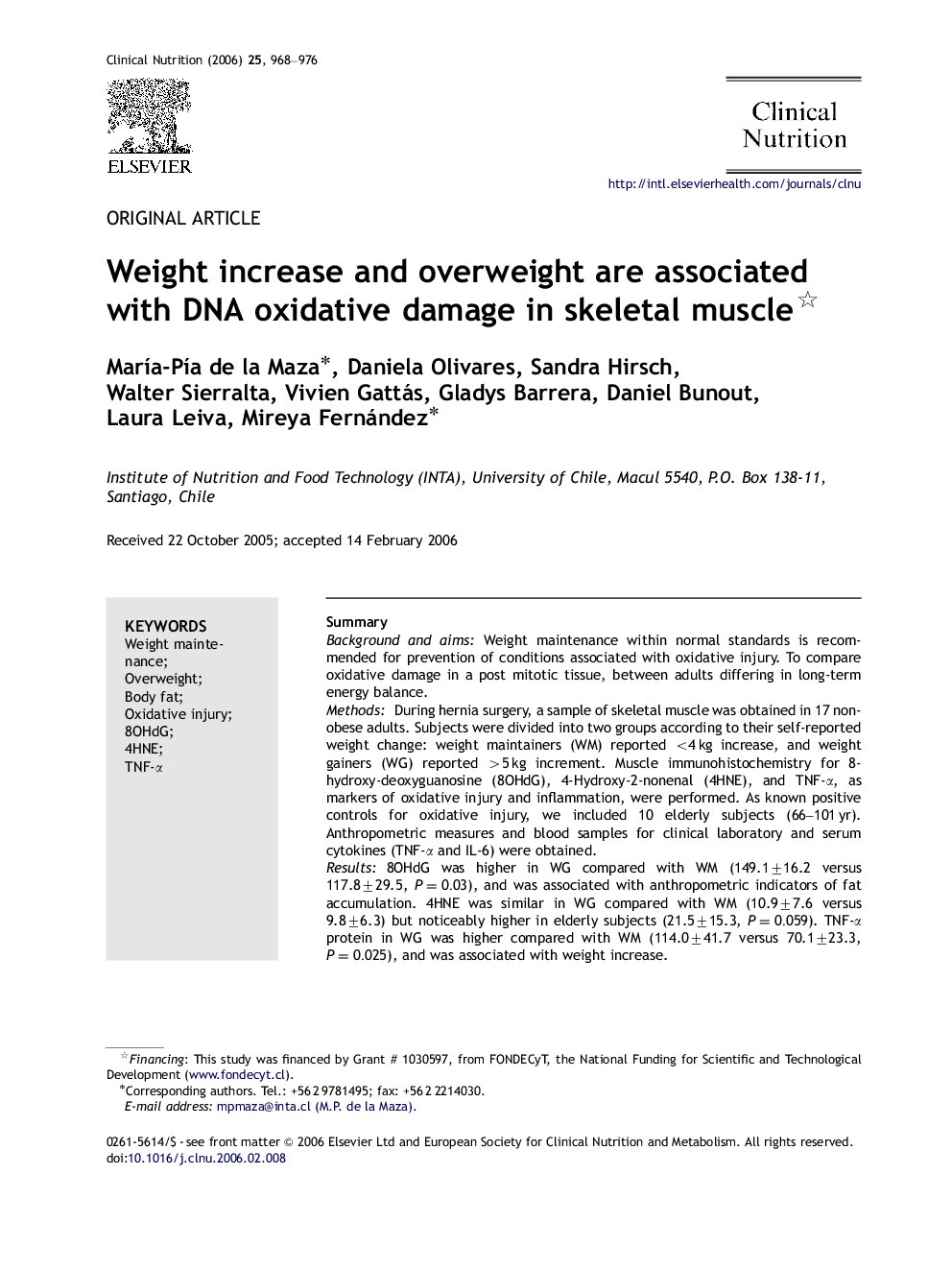| Article ID | Journal | Published Year | Pages | File Type |
|---|---|---|---|---|
| 2688677 | Clinical Nutrition | 2006 | 9 Pages |
SummaryBackground and aimsWeight maintenance within normal standards is recommended for prevention of conditions associated with oxidative injury. To compare oxidative damage in a post mitotic tissue, between adults differing in long-term energy balance.MethodsDuring hernia surgery, a sample of skeletal muscle was obtained in 17 non-obese adults. Subjects were divided into two groups according to their self-reported weight change: weight maintainers (WM) reported <4 kg increase, and weight gainers (WG) reported >5 kg increment. Muscle immunohistochemistry for 8-hydroxy-deoxyguanosine (8OHdG), 4-Hydroxy-2-nonenal (4HNE), and TNF-α, as markers of oxidative injury and inflammation, were performed. As known positive controls for oxidative injury, we included 10 elderly subjects (66–101 yr). Anthropometric measures and blood samples for clinical laboratory and serum cytokines (TNF-α and IL-6) were obtained.Results8OHdG was higher in WG compared with WM (149.1±16.2 versus 117.8±29.5, P=0.03P=0.03), and was associated with anthropometric indicators of fat accumulation. 4HNE was similar in WG compared with WM (10.9±7.6 versus 9.8±6.3) but noticeably higher in elderly subjects (21.5±15.3, P=0.059P=0.059). TNF-α protein in WG was higher compared with WM (114.0±41.7 versus 70.1±23.3, P=0.025P=0.025), and was associated with weight increase.ConclusionsModerate self-reported weight increase, and body fat accumulation, suggesting long-term positive energy balance is associated with muscle DNA oxidative injury and inflammation.
